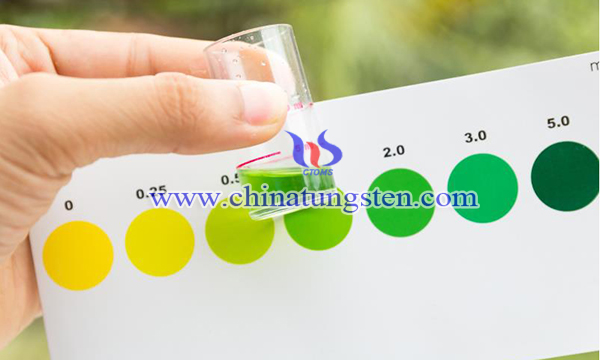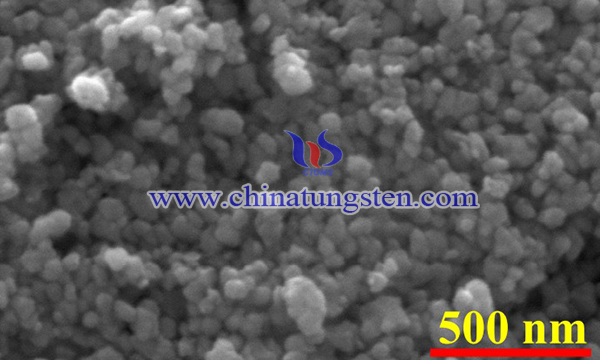Tungsten Trioxide Nanoparticles for Ammonia Sensing at Room Temperature
- Details
- Category: Tungsten Information
- Published on Tuesday, 12 October 2021 22:41
Ammonia (NH3) is a gas present in the entire atmosphere in relatively small concentrations (1–5 ppb) and is mainly emitted by human activities. Ammonia causes negative effects to living beings. Therefore, it has been suggested 25 ppm as an allowed exposure level of ammonia concentration. Thus, it is important to find a sensing material for ammonia sensing at room temperature.
Tungsten trioxide (WO3) is one of the most used semiconductor metal oxide as a sensing layer. Tungsten trioxide nanoparticles for ammonia sensing at room temperature has been prepared by a solvothermal method. The synthesis process of WO3 nanoparticles is as below:

Analytical grade chemicals were used in this study, such as tungsten hexachloride (WCl6) (99.99%), urea, ethanol, and ammonia. Tungsten hexachloride (WCl6) is used as a precursor for the preparation of tungsten trioxide (WO3) nanoparticles. The reaction occurs by dissolving 0.05 M WCl6 and 0.1 M urea in 40 ml ethanol solution. Use a magnetic stirrer to continuously stir the solution for 2 hours. It was then transformed into a stainless steel autoclave lined with polytetrafluoroethylene and kept at 180 ºC for 12 hours. The resulting product was washed and rinsed with distilled water and ethanol several times to remove untreated materials. Finally, collect the sediment and dry it in an oven at 60ºC for 24 hours. The obtained solid product was annealed at 450 ºC for 3 hours to form the original WO3. XRD, FE-SEM, FT-IR, EDS, Raman spectroscopy and UV-Vis spectroscopy were used to characterize the prepared nanoparticles.

In summary, tungsten trioxide nanoparticles are prepared by a solvothermal method and deposited on a glass substrate using a simple drop casting method to detect ammonia (NH3) at room temperature. The result revealed that the as-prepared sensing material has good sensivity and quick response to ammonia. The sensing limit could reach 1ppm of ammonia.
- Tungsten Oxide Manufacturer & Supplier, Chinatungsten Online: www.tungsten-oxide.com
- Tungsten News & Prices of China Tungsten Industry Association: www.ctia.com.cn
- Molybdenum News & Price: news.molybdenum.com.cn
- Tel.: 86 592 5129696; Fax: 86 592 5129797; Email: sales@chinatungsten.com



 sales@chinatungsten.com
sales@chinatungsten.com